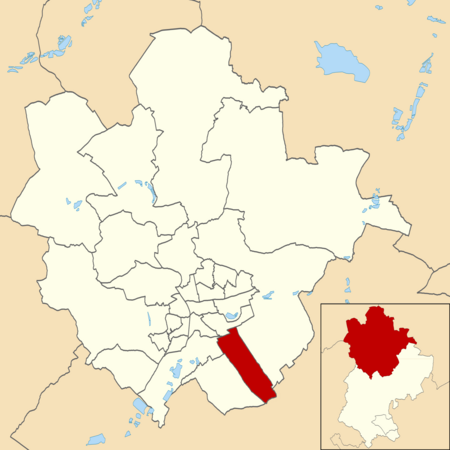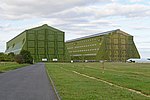Bedfordshire is a county in the East of England. It is bounded by Hertfordshire to the south-east, Cambridgeshire to the north-east, Northamptonshire to the north, and Buckinghamshire to the west. It has an area of 1,235 square kilometres (477 sq mi), and a population estimated in 2016 at 640,000, with an increase of 11% over the previous ten years. Geographically, it is mainly rural, but still the fourteenth most densely populated county of England, with over half the population living in the two largest built-up areas, Luton and Bedford. The county is governed by three unitary authorities, Bedford, Central Bedfordshire and Luton. The county town is Bedford, and the name is first recorded in the treaty in about 879 between King Alfred the Great and Guthrum, which divided English and Danish territory by a line which went through Bedford.Much of Luton and southern Bedfordshire lies in the Chilterns Area of Outstanding Natural Beauty. North and mid Bedfordshire are undulating claylands with broad river valleys of the River Great Ouse and its tributaries, and the Bedfordshire Greensand Ridge. Jurassic and Cretaceous clays are overlaid by Quaternary glacial deposits of chalky boulder clay.Local nature reserves (LNRs) are designated by local authorities under the National Parks and Access to the Countryside Act 1949. The local authority must have a legal control over the site, by owning or leasing it, or having a legal agreement with the owner. LNRs are sites which have a special local interest either biologically or geologically, and local authorities have a duty to care for them. They can apply local bye-laws to manage and protect LNRs.As of March 2016 there are twenty local nature reserves in Bedfordshire: eight in Bedford, eleven in Central Bedfordshire and one in Luton. The largest is Harrold-Odell Country Park with 59.3 hectares (147 acres); it is a former quarry on the bank of the River Great Ouse which has river meadows and two lakes. The smallest is Hill Rise at 0.9 hectares (2.2 acres); it is close to Bedford town centre and surrounded on three sides by houses, but it has a variety of habitats. There is public access to all the sites.










